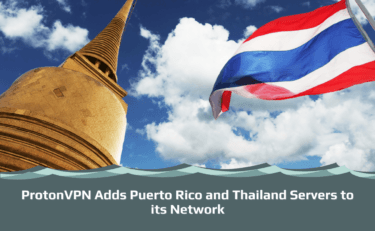Does iPhone have built-in VPN? Well, the answer is yes and no. This blog post will discuss how to use a third-party VPN app on your phone, as well as why this might be better than using the built-in setting feature.
The relay VPN that was announced by Apple in its iOS 15 update earlier this year is now available. It allows you to connect anonymously without having to worry about any additional settings or configurations – all you need is WiFi access. But there are some disadvantages of using the built-in VPN over third-party apps which we will discuss below.
Here is everything you need to know about the iPhone’s built-in VPN.
What Does the Built-in iPhone VPN Offer?
The relay VPN allows you to connect anonymously without having to worry about any additional settings or configurations. It is a user-friendly feature that doesn’t require any technical knowledge to set up and use. All you need is WiFi access.
The relay VPN can also help protect your privacy by hiding your IP address from internet services providers as well as hackers who are trying to intercept data over public WiFi networks – this prevents them from monitoring what you’re doing online without your permission. In fact, Apple’s website says “Your Internet Service Provider (ISP) will not see any details of the connections.” This means they cannot monitor which sites users visit on their iPhones or iPads because all traffic goes through an encrypted channel between iOS devices and servers hosted by Apple.
Should I Use iPhone’s Built-in VPN or a Third-Party VPN App?
There are a number of advantages and disadvantages to using the built-in VPN over third-party iPhone VPN apps. If you’re looking for ease of use, then go with Apple’s default option. However, if you want more control or extra features such as a kill switch, geo-unblocking, and split tunneling – then going with a third party is best for you.
With a third-party VPN app like NordVPN, you can choose which server you connect to in specific countries and switch servers. These features are not available with the built-in VPN.
Another notable disadvantage that Apple’s default option has over third-party apps like NordVPN is security and privacy settings. For example, when using a third-party app such as NordVPN for iPhone, users can turn on their kill switch so they don’t expose any data while they’re not connected to the VPN service (for instance, before connecting from an untrusted WiFi network). Apple’s built-in VPN does not have this feature.
On the other hand, there are some disadvantages to using third-party apps like NordVPN. You need to ensure that you choose a VPN service that comes with a no-logging policy so that you can ensure your data is not logged and misused by a third party.
To conclude, whether or not you should choose between an iOS’s built-in relay VPN vs third-party providers is really down to what you want from your device and its security and privacy settings – do research before choosing a VPN for your iPhone so that you have the best VPN experience possible.

I’m Madeleine, and I'm a writer that specializes in cybersecurity, tech products, and all things related to the internet.
I have a keen interest in VPNs and believe that everyone deserves internet freedom and security. I wr...
Read more about the author

